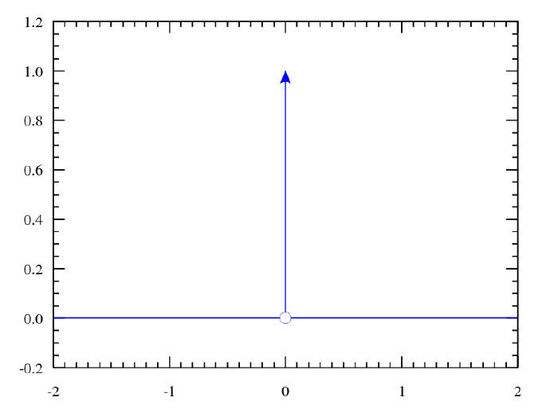Consider the equation
$$
-\sum_{i=1}^n\frac{\partial }{\partial x_i}a_i(x,u,\nabla u)+a_0(x,u,\nabla u)=0\quad in\;\Omega \tag{1.1}
$$
where $\Omega$ is a bounded domain in $\mathbb{R}^N$. On boundary $\Gamma$, add to $(1.1)$ the first boundary value condition
$$
u=0\quad on\;\Gamma.
$$
Introduce a definition of a generalized solution.
Definition 1.1 The function $u\in H_0^2$ is called the generalized solution of problem $(1.1)$ if it satisfied the integral equality
$$
\mathcal{L}(u,v)\equiv\int_{\Omega}\left\{\sum_{i=1}^{n}a_i(x,u,\nabla u)\partial_i v+a_0(x,u,\nabla u)\right\}dx=0\quad \forall v\in H_0^1\tag{1.2}
$$Consider an approximation of $(1.2)$ in finite-dimensional space $U_h\sub H_0^1$: find the function $u_h\in U_h$ such that
$$
\mathcal{L}(u_h,v)=0\quad \forall v\in U_h.\tag{1.3}
$$
Definition 1.2 The form $\mathcal{L}(\cdot,\cdot)$ is called strong-monotone if
$$
\mathcal{L}(u.u-v)-\mathcal{L}(v,u-v)\geq c_0\parallel u-v\parallel_1^2.\tag{1.4}
$$
Definition 1.3 We call the form $\mathcal{L}(\cdot,\cdot)$ Lipschitz-continuous if
$$
|\mathcal{L}(u,w)-\mathcal{L}(v,w)|\leq\parallel u-v\parallel_1\parallel w\parallel_1\tag{1.5}
$$
For instance, from strong monotonicity it follows that the generalized solution is unique. Indeed, let $u_1,u_2$ be two solutions of problem $(1.2)$. The from
$$
0=\mathcal{L}(u_1,u_1-u_2)-\mathcal{L}(u_2,u_1-u_2)\geq c_0\parallel u_1-u_2\parallel_1^2,
$$
i.e., $u_1=u_2$
Lemma 1.1 Let $\xi\to P(\xi)$ be a continuous mapping $\mathbb{R}^N$ in itself such that for a suitable $\rho >0$
$$
(P(\xi),\xi)_{\mathbb{R}^N}>0\quad \forall\xi:|\xi|_{\mathbb{R}^N}=\rho.
$$
Then we can find an $\xi$ from the ball $|\xi|_{\mathbb{R}^N}<\rho$ such that $P(\xi)=0$.
Theorem 1.1 Assume that the form $\mathcal{L}$ is strong-monotone, Lipschitz-continuous, and besides bounded at zero in the second argument
$$
|\mathcal{L}(0,v)|\leq c_2\parallel v\parallel_1\quad \forall v\in H_0^1.
$$
Then the problem $(1.3)$ has a unique solution $u_h$ satisfying the estimate
$$
\parallel h_h\parallel_1\leq c_2/c_0.
$$
Consider the inequality
$$
|\mathcal{L}|\geq|\mathcal{L}(u,u)-\mathcal{L}(0.u)|+|\mathcal{L}(0.u)|,\quad u\in U_h
$$
Owing to strong-monotonicity of $(1.4)$,
$$
\mathcal{L}(u,u)-\mathcal{L}(0,u)\geq c_0\parallel u\parallel_1^2.
$$
Combining the inequalities, we get the estimate
$$
|\mathcal{L}|\geq c_0\parallel u\parallel_1^2-c_2\parallel u\parallel_1.
$$
Each vector $V\in\mathbb{R}^N$ with components $V_i$ can be associated with the prolongation $v_h\in V_h\sub H_0^1$ by the rule:
$$
v_h(x)=\sum_{i=1}^{N}V_i\varphi_i(x)
$$
Using the prolongations, let us concretize the scalar product and the norm in $\mathbb{R}^N$
$$
(V,W)_{\mathbb{R}^N}=\int_{\Omega}(\nabla v_h\cdot\nabla w_h+v_h\cdot w_h)dx,\quad \parallel V\parallel_{\mathbb{R}^N}=\parallel v_h\parallel_1.
$$
Let us to prove its boundedness. Consider the inequality
$$
|\mathcal{L}(w_h,v_h)|\leq|\mathcal{L}(w_h,v_h)-\mathcal{L}(0,v_h)|+|\mathcal{L}(0,v_h)|
$$
Apply besides bounded estimate and Lipschitz-continuity:
$$
|\mathcal{L}(w_h,v_h)|\leq c_1\parallel w_h\parallel_1\parallel v_h\parallel_1+c_2\parallel v_h\parallel_1=(c_1\parallel W\parallel_{\mathbb{R}^N}+c_2)\parallel V\parallel_{\mathbb{R}^N}
$$
The boundedness follows just from the above. Therefore, from the F. Riesz theorem, it follows that there exits a vector $P(W)$ defining this functional:
$$
(P(W),V)_{\mathbb{R}^N}=\mathcal{L}(w_h,v_h).
$$
Let us prove its continuity. Indeed, consider the expression
$$
(P(W)-P(U),V)_{\mathbb{R}^N}=\mathcal{L}(w_h,v_h)-\mathcal{L}(u_h,v_h).
$$
From the Lipschitz-continuity of the form $\mathcal{L}$, it follows that
$$
|(P(W)-P(U),V)_{\mathbb{R}^N}|\leq c_1\parallel w_h-u_h\parallel_1\parallel v_h\parallel_1=c_1\parallel W-U\parallel_{\mathbb{R}^N}\parallel V\parallel_{\mathbb{R}^N}
$$
Put here $V=P(W)-P(U)$ and cancel $\parallel V\parallel_{\mathbb{R}^N}$. We obtain the estimate
$$
\parallel P(W)-P(U)\parallel_{\mathbb{R}^N}\leq c_1\parallel W-U\parallel_{\mathbb{R}^N}
$$
which confirms the continuity of the operator $P$.
Assume that $\rho=c_2/c_0$. Then for any $V\in \mathbb{R}^N$ such that $\parallel V\parallel_{\mathbb{R}^N}=\rho$, we have
$$
(P(V),V)_{\mathbb{R}^N}=\mathcal{L}(v_h,v_h)\geq c_0\rho^2-c_2\rho=0
$$
Thus, we obtain the conditions of Lemma 1.1. From this lemma, it follows that there exists a solution of the system
$$
P(U)=0,
$$
the estimate
$$
\parallel U\parallel_{\mathbb{R}^N}=\parallel u_h\parallel_1\leq c_2/c_1
$$
being valid for it.
Theorem 1.2 Let the form $\mathcal{L}$ be strong-monotone, Lipschitz-continuous and $|\mathcal{L}(0,v)|\leq c_2\parallel v\parallel_1,\forall v\in H_0^1(\Omega)$ be satisfied. Then the estimate
$$
\parallel u-u_h\parallel_1\leq\frac{c_1}{c_0}\inf_{v\in V_h}\parallel u-v\parallel_1
$$
is valid for the solution of problem $(1.3)$.
From equalities $(1.2)$ and $(1.3)$, it follows that
$$
\mathcal{L}(u,w)-\mathcal{L}(u_h,w)=0\quad \forall w\in U_h.
$$
Put here $w=(u-u_h)-(u-v)$ where $v$ is an arbitrary function from $U_h$. Taking into account linearity in the second coefficient, we get
$$
\mathcal{L}(u,u-u_h)-\mathcal{L}(u_h.u-u_h)=\mathcal{L}(u,u-v)-\mathcal{L}(u_h,u-v).
$$
Use strong monotonicity in the left-hand side and Lipschitz-continuity in the right-hand
side. Then
$$
c_0\parallel u-u_h\parallel_1^2\leq c_1\parallel u-u_h\parallel_1\parallel u-v\parallel_1.
$$
Reduce the expression by $c_0\parallel u-u_h\parallel_1$ and take infimum with respect to v for both
sides.
Lemma 1.2 When conditions $0\leq \frac{\partial f}{\partial v}(x,v)\leq c_3$, quasi-regular are satisfied, the approximate solution $u_h=\sum_i \alpha_i \varphi_i(x)$ of problem $\mathcal{L}(u_h,v)=0,\forall v\in U_h$ is defined uniquely and the following estimate holds:
$$
\parallel u-u_h\parallel_1\leq c_4 h\parallel u\parallel_2.\tag{1.6}
$$
Verify the condition $|\mathcal{L}(0,v)|\leq c_2 \parallel v\parallel_1, \;\forall v\in H_0^1$ of boundedness at zero. Apply the Cauchy-Bounyakovski inequality to the expression
$$
|\mathcal{L}(0,v)| = |\int_{\Omega}f(x,0)vdx|\leq |v|_0|f(x,0)|_0.
$$
since $f(x,0)\in C(\bar{\Omega})$, the value $|f(x,0)|_0$ is bounded and therefore
$$
|\mathcal{L}(0,v)|\leq c|v|_0.
$$
Theorem $1.2$ dictates the estimates
$$
\parallel u-u_h\parallel\leq c\inf_{v\in U_h}\parallel u-v\parallel_1\leq c\parallel u-I_h(u)\parallel_1.
$$
By interpolation error estimation
$$
\parallel u-I_h(u)\parallel_1\leq ch\parallel u\parallel_2
$$
we get $(1.6)$.
When conditions $0\leq \frac{\partial f}{\partial v}(x,v)\leq c_3$, quasi-regular are satisfied, the following estimate holds
$$
|u-u_h|_0\leq c_5 h^2\parallel u\parallel_2.
$$
Introduce the function
$$
a(x)=\left\{\begin{aligned}&\partial f(x)/\partial u,&if\;u(x)=u_h(x),\\&(f(x,u)-f(x,u_h))/(u-u_h),&otherwise.
\end{aligned}\right.
$$
Consider solving the problem: find a function $w\in H_0^1$ such that
$$
\int (\nabla w\cdot\nabla v+awv)dx=(u-u_h,v)\quad \forall v\in H_0^1
$$
This problem is linear and $u-u_h$ belongs to $L^2(\Omega)$. Consider also its finite elements approximation being the solution of the following problem: find $w_h\in U_h$ such that
$$
\int_{\Omega}(\nabla w_h\cdot\nabla v+aw_hv)dx=(u-u_h,v)\tag{1.7}
$$
Then we have
$$
|w-w_h|_1\leq c_6h|u_h-u|_0.
$$
Put $v=u-u_h$ into $(1.7)$ :
$$
|u-u_h|_0^2=\mathcal{L}(u,w)-\mathcal{L}(u_h,w).
$$
by virtue of the definition of $u$ and $u_h$
$$
\mathcal{L}(u,w_h)-\mathcal{L}(u_h,w_h)=0
$$
Subtracting this from The above, we get the following estimates allowing for Lipschitz-
continuity $(1.5)$:
$$
|u-u_h|_0^2=\mathcal{L}(u,w-w_h)-\mathcal{L}(u_h,w-w_h)\leq c_1\parallel u-u_h\parallel_1\cdot\parallel w-w_h\parallel_1
$$
we get
$$
|u-u_h|_0^2\leq c_5 h^2\parallel u\parallel_2|u-u_h|_0
$$




0 条评论